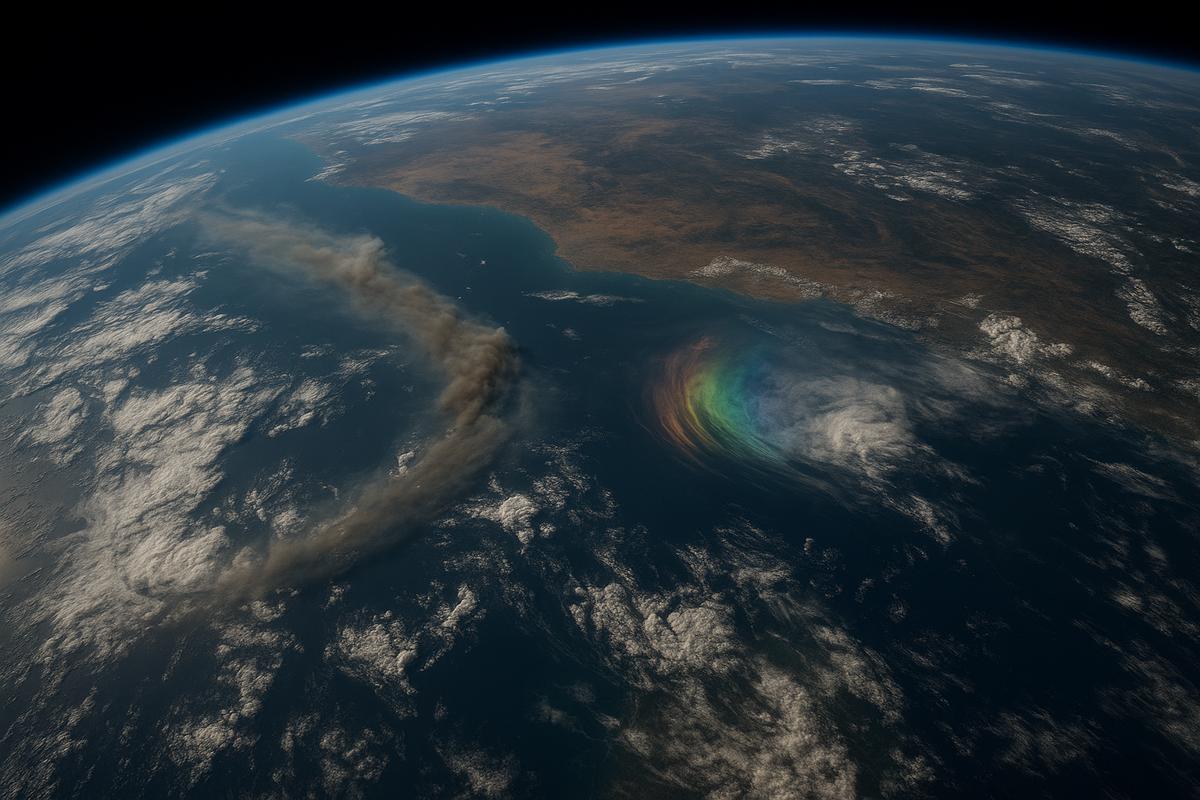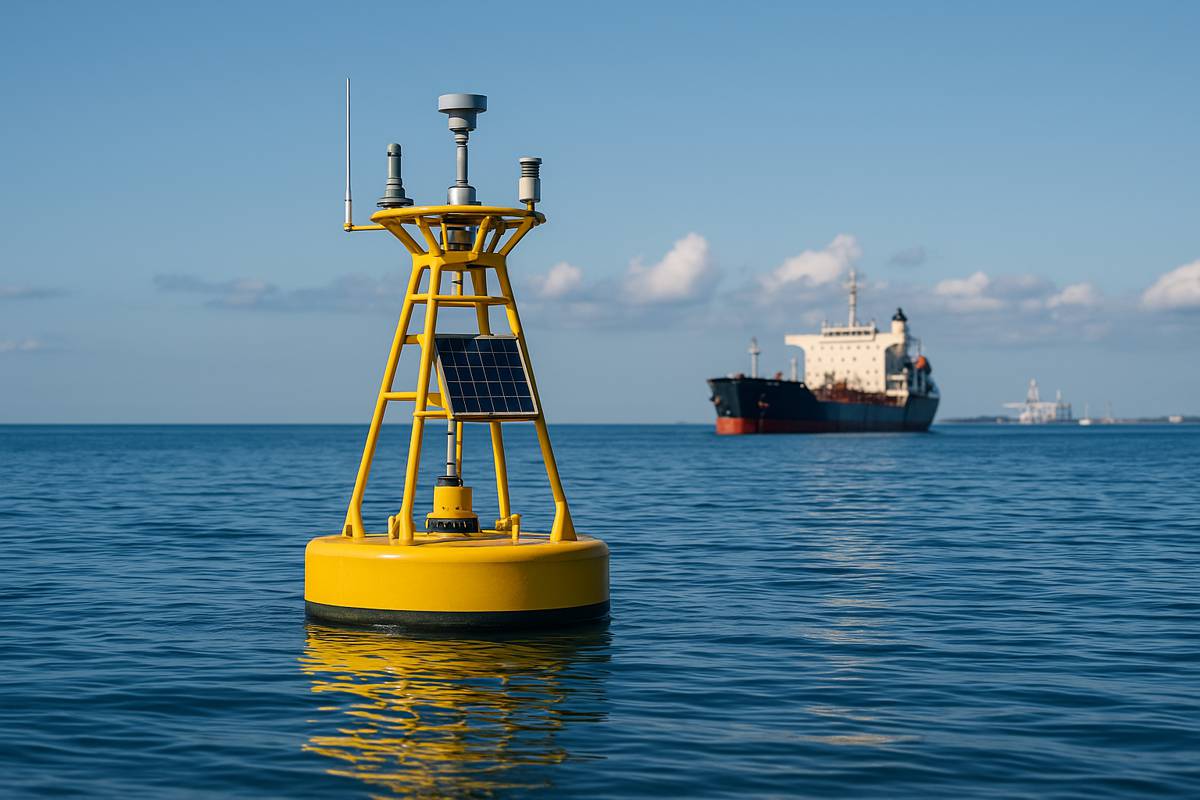A New Era Of Atmospheric Insights
The unveiling of the first images from Europe’s latest atmospheric instrument marks a significant moment for weather forecasting, climate science and public health. The Multi-Viewing, Multi-Channel, Multi-Polarisation Imager, known as 3MI, has delivered its inaugural view of Earth from the Metop Second Generation A1 satellite. These early observations, shared during the 2025 EUMETSAT Meteorological Satellite Conference, highlight the instrument’s impressive ability to analyse atmospheric particles from multiple angles. This unprecedented clarity promises to improve the understanding of aerosols, clouds and pollution, all of which strongly influence weather patterns and human health.
Researchers and forecasters across Europe have long relied on space-based systems to monitor changing atmospheric conditions. Yet with air pollution still responsible for more than 350,000 premature deaths within the European Union in 2022, the demand for more precise, real-time data has never been greater. 3MI offers a leap forward in that regard, providing detailed insights into fine particulate matter, wildfire smoke, dust, salt aerosols and cloud structures. Such observations are essential to helping meteorological agencies deliver more accurate forecasts and early warnings.
Breakthrough Images From 3MI
3MI captured its first images on 28 August 2025, barely two weeks after the launch of Metop-SGA1. The results were immediately recognised as exceptional, revealing fine-scale atmospheric features with a level of detail previously unseen in Europe’s operational monitoring systems. Smoke from severe wildfires across Southern Europe appeared with striking clarity, allowing scientists to track its movement and density. Equally captivating were the rainbow-like cloud formations observed over Peru and Chile, offering a glimpse into complex microphysical cloud processes.
These early successes build on the legacy of POLDER, an earlier French-led mission that demonstrated the value of monitoring polarised light for aerosol characterisation. However, 3MI is Europe’s first operational polarimeter, meaning its data will be available continuously for many years. This is critical for long-term climate monitoring, atmospheric modelling and pollution analysis.
The development of 3MI took more than fifteen years and involved a broad consortium, including EUMETSAT, the European Space Agency, Leonardo, Airbus Defence and Space and a network of academic and research partners. Their collaboration ensures that Europe remains at the forefront of atmospheric observation technologies.
Phil Evans, Director-General of EUMETSAT, highlighted the wider importance of such satellite systems: “2024 was the hottest year ever recorded, in Europe and globally, and European countries are increasingly seeing weather extremes marked by devastating heat, drought, floods, fires and violent storms. From high above Earth, meteorological satellites can reveal the scale and fine detail of some of the world’s most critical weather and climate stories.” He emphasised that sharing knowledge and strengthening connections across disciplines will ensure that data becomes actionable information for communities.
The Value Of Satellites For Forecasting And Climate Monitoring
Meteorological satellites underpin a large share of Europe’s forecasting capability. Météo-France underscored this reliance, noting that more than 90% of the data used in its global numerical prediction model originates from space-based instruments. Without these systems, early warnings for storms, heat events, floods or droughts would be far less reliable.
Virginie Schwarz, Chief Executive Officer of Météo-France, stressed the growing importance of such technologies: “Governments, businesses and citizens need reliable weather and climate services more than ever. For the weather and climate services provided by Météo-France, meteorological satellite data are indispensable.” She added that the annual EUMETSAT conference remains invaluable for sharing knowledge and strengthening partnerships across borders.
Satellites like 3MI and other Metop-SGA1 instruments add to a broader constellation of European Earth observation missions, including the Copernicus Sentinel series. Together, they allow a holistic view of the atmosphere, oceans and land surface. This multi-dimensional perspective is vital for tackling cross-border environmental challenges.
Artificial Intelligence And The Future Of Weather Prediction
While instruments like 3MI offer a physical window into the atmosphere, artificial intelligence is rapidly transforming how meteorologists interpret and act on that information. From 9 to 11 September, more than fifty experts gathered in Abu Dhabi to discuss the implications of AI for global forecasting. Hosted by the World Meteorological Organization and the UAE’s National Center of Meteorology, the event brought together leading technology companies, government meteorological agencies and academic researchers.
The conference acknowledged the growing maturity of AI-driven forecasting tools. Over the past three years, machine learning models developed by companies such as Google, Microsoft and NVIDIA have moved from experimental prototypes to practical operational systems. These tools show particular promise for short-term hazard prediction, including severe storms, flash floods and heatwaves. They complement traditional numerical models by identifying patterns and anomalies more rapidly.
However, delegates also noted that AI models still require further development before they can fully replace or heavily supplement existing systems. Localised, high-impact events remain difficult for algorithms to predict reliably. Concerns were also raised about data standardisation, algorithm transparency and global accessibility.
Ko Barrett, WMO Deputy Secretary-General, emphasised the urgency of integrating AI into meteorological workflows: “We must harness the power of prediction. We must adopt AI-powered weather and climate intelligence into every early warning and decision-making system because lives depend on it.” She also highlighted the importance of ensuring that AI tools remain accessible to developing nations.
Building Global Capacity For AI-Enhanced Meteorology
One of the strongest messages to emerge from the Abu Dhabi conference was the need for global equity. Many countries, particularly those most vulnerable to climate shocks, lack the computational resources or data infrastructure required to implement advanced AI systems. Without targeted support, the benefits of new technologies could widen existing inequalities.
To counter this risk, the WMO has already launched pilot projects across several regions. These include AI-driven flood prediction in Nigeria, Vietnam, Uruguay, Czech Republic and Malawi. Additional initiatives aim to improve sub-seasonal forecasting in Africa, the Caribbean and the Pacific. Each project is designed to enhance local capabilities while ensuring that national meteorological services maintain their authority.
In parallel, Regional Climate Centres across three continents are applying machine learning tools in collaboration with private-sector partners. These programmes focus on improving forecasting accuracy, enhancing data interpretation and strengthening disaster preparedness.
Moving Towards A Smarter, Safer Forecasting Ecosystem
The outcomes of the Abu Dhabi meeting will feed directly into discussions at the WMO Extraordinary Congress in October. Delegates are expected to debate formal policies governing the use of AI in meteorology, including standards for transparency, validation and operational oversight. These policies will play a key role in shaping the future of global weather and climate services.
As Europe prepares to integrate 3MI into its operational forecasting systems, the combination of advanced satellite data and AI-powered analytics represents a powerful step forward. Together, they promise to create a more resilient, better-informed world.
A Clearer View Of Tomorrow
The shift towards high-resolution atmospheric observation and intelligent forecasting reflects a broader transformation in how nations prepare for extreme weather and long-term climate risks. With 3MI providing unprecedented views of aerosols and cloud dynamics, and with AI enhancing prediction accuracy, meteorological services are entering a new era of capability.
Both developments highlight a shared goal: protecting lives, infrastructure and economies through better understanding of the atmosphere. As collaborations continue to grow across agencies, industries and research institutions, the path towards safer, climate-resilient societies becomes increasingly visible.




















